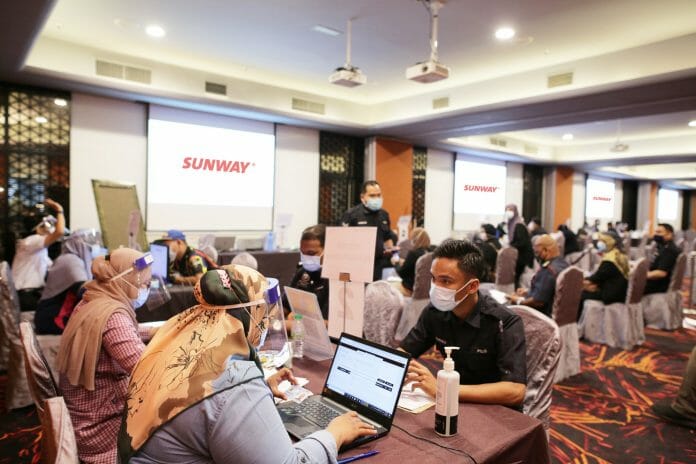
The government is changing its indicator for the National Recovery Phase. Earlier announced by the Prime Minister initially, the transition from EMCO to Phase 1 , 2 or 3 depended on the number of daily cases. If a particular state hits below 4000 cases, it will move into Phase 1 and 2000 cases to Phase 2 while it will need a threshold of 1000 to be in the Phase 3 category where most restrictions will be eased.
However, this indicator has now be changed in reflection of the global approach to reopening where vaccination rates and symptomatic cases are being used. The National Security Council will now be using the number of new hospital admissions for symptomatic COVID-19 cases as a new phase transition indicator for states that are in Phase One of the National Recovery Plan, a decision made after consultation with the Ministry of Health.
This will be carefully monitored as illustrated by coordinating Minister Tengku Zafrul who said the indicator would only replace the existing indicator when at least 50 percent of the adult population in these states are fully vaccinated. He added the decision was made based on the advice of health experts as well as international and domestic experience, with the observation that the COVID-19 transmission risk decreased with increased vaccination rates of the adult population.
Zafrul, who is also Finance Minister, said the assessment for the transition from one phase to the next was still subject to all indicators, including the utilisation of intensive care unit (ICU) capacity and the vaccination rate of the adult population.
So how will the new system be utilised, for example, when the Klang Valley, Johor, Negeri Sembilan, Kedah and Melaka which are still in Phase One reach at least a 50 per cent full vaccination rate of the adult population, the case indicator that will be used is new hospital admissions for symptomatic cases. They can only move to Phase Two if they achieve the threshold value of symptomatic new hospital admissions (6.1 per 100,000 population) and a moderate level of ICU utilisation capacity,” he said.
This approach will offer a better chance for the economy to bounce back as we have to come to a realisation that the Covid-19 virus will be among the population for a very long time to come. Governments will have to find ways to implement actions that can circumvent this aspect with the economy in mind.
Malaysia is recoding staggering numbers of new cases so much so Washington Post called us mini India, but according to Ministry of Health Director General, stage 1 and stage 2 cases were below 0.5, the low rate being attributed to the acceleration of vaccinatios in the country. This was evident in Sarawak and Labuan where immunisation is close to herd immunity which resulted in a significant reduction in symptomatic cases and those requiring treatment in ICU.
“Although Sarawak and Labuan faced full ICU ward capacity in June, the utilisation decreased to an ‘adequate’ level after the vaccination rate reached 50 per cent in July,” said Zafrul.
Risk assessment to consider the opening of economic and social activities will be more accurate if it were made based on the number of symptomatic cases of Categories three, four and five, compared to by referring to the number of new daily cases. Although new daily cases in Sarawak reached 400 a day, the number of new patients in Categories three, four and five is less than 10 patients or two per cent of daily cases.
Countries like the United Kingdom have also taken an approach that focuses on the symptomatic case rate and have continued to allow the opening of economic and social activities based on its risk assessment, namely the number of symptomatic cases is low even though new cases are still high.
The methodology is not plucked from thin air but with empirical evidence from data and science. Applying this method, however, should not be cast in stone and the government should constantly monitor the situation on a daily basis and make changes wherever possible.
As for the public, we should support this transition and also expect the authorities to be more transparent with data.









